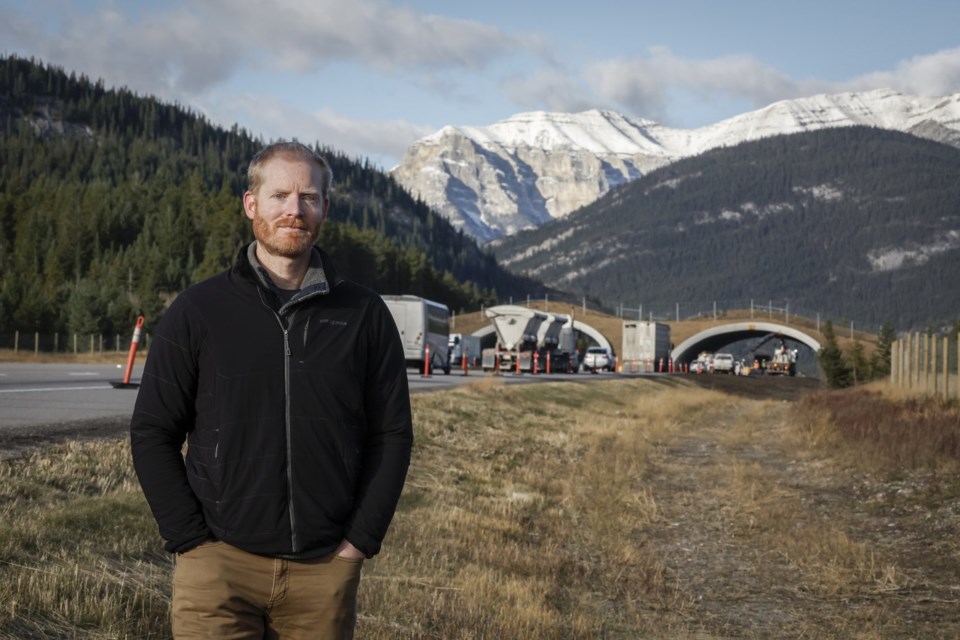EXSHAW, Alta. — Almost every day when Blair Painter drives on the scenic Rocky Mountain highway near his home, the grey asphalt is stained red somewhere along the way.
And Painter, the mayor of Crowsnest Pass, says it’s hard to find any driver who hasn’t had at least one close call with wildlife on the area’s busy transportation corridors.
But he expects Alberta’s growing network of wildlife overpasses and underpasses will make it safer for all.
The Crowsnest Pass, connecting Alberta with British Columbia via Highway 3, is the latest area in a growing provincial network of fences, underpasses and overpasses funnelling wildlife through their natural habitat but out of harm’s way from the steady highway stream of stream of trucks and cars.
"It's something we should have considered years ago. I think they're invaluable," Painter said in an interview.
Work on the underpass east of the community is well underway.
It’s critical, Painter said.
"I think (the Crowsnest Pass) is one of the highest animal collision areas in the province. I was at a meeting out of town recently and I almost got one there," Painter said in an interview.
"At night especially they just pop out. There are plenty. There's red patches on the road every day when you drive through, so it's a very frequent occurrence."
Five years ago, the Alberta government announced $20 million for the Crowsnest underpass and a new overpass, outside Banff National Park, east of Canmore.
That overpass is nearly complete with workers putting the final touches along the busy Trans-Canada Highway.
The section of the TransCanada inside Banff National Park is lined on either side with 2.4-metre-high, reinforced wire fences. There are six wildlife overpasses and 38 underpasses to protect humans and animals.
The Yellowstone to Yukon Conservation Initiative, a longtime advocate for animal protection, said the new overpass has been used by deer and elk since last fall, keeping them away from about 30,000 cars and trucks that drive through daily in the summer.
"As of last fall when the fencing was completed, the monitoring cameras that Alberta has put up show that wildlife was using this crossing, even before it was done,” said Tim Johnson, a landscape connectivity specialist for Y2Y.
Johnson said the area has seen a lot of vehicle collisions involving deer and elk, with catastrophic consequences on both sides of the windshield.
"With larger animals, deer, elk, moose you're often hitting their legs out from under them and then they're coming up on to the windshield or the roof of the car and it does not end well for people and for wildlife,” he said.
Johnson said Banff National Park is known worldwide for taking a lead in finding ways to make roads safer for people and wildlife since it built its first underpass in the 1990s. At that time there were about 120 collisions a year.
"If you look at the record of collisions, collisions with deer and elk have gone down by 96 per cent. On average for all species, it's around 80 per cent in the national park,” he said.
Near Canmore, work on about 10 kilometres of wildlife fencing from Banff National Park's east gate to the Bow River Bridge is to get underway next year.
Canmore Mayor Sean Krausert said it’s welcome infrastructure given how common it is to see herds of elk crossing the highway, but said he also wants to ensure it doesn’t harm the ability of the wildlife to find their way across the Bow Valley.
"We also have to make sure the wildlife connectivity is kept intact so they can actually move through the valley as unhindered as possible,” he said.
This report by The Canadian Press was first published Nov. 3, 2024.
Bill Graveland, The Canadian Press




